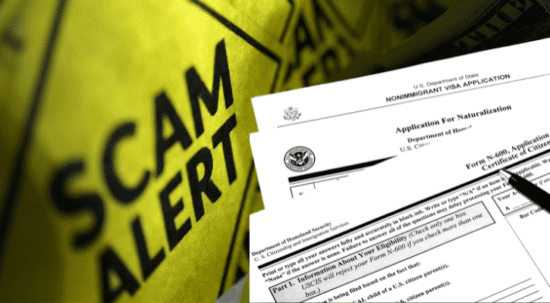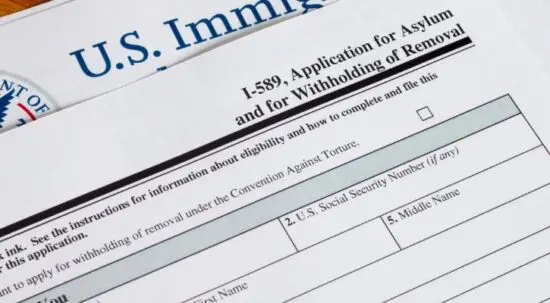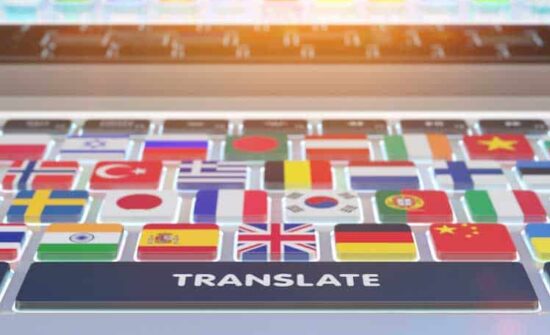Immigration changes
The Trump administration is making stricter immigration policies and changing several existing rules. Many of these changes are currently being challenged in court. Some cases could affect who qualifies for protection or legal status in the future.
Some recent examples of immigration programs and rights being decided in the courts include:
- Temporary Protected Status (TPS)
- Deferred Action for Childhood Arrivals (DACA)
- Citizenship and birthright laws
- Asylum seekers’ access to work permits
- U.S. Refugee Admissions Program (USRAP)
The three branches of government
The U.S. government has three parts that share power:
- Congress (the Legislative branch) makes the laws.
- The President (Executive branch) enforces the laws.
- The Courts (Judicial branch) interpret the laws and decide whether the other branches are following the Constitution.
When a policy or law is challenged, it often ends up in court. The courts decide whether it can continue or must stop.
The court system: local to national
There are two main kinds of courts in the United States:
- State courts deal with state laws, such as family or criminal cases. They don’t decide federal immigration law, but their decisions can affect how immigration enforcement happens in their state. For example, stopping ICE from making arrests in certain places.
- Federal courts handle immigration policy and law cases because immigration is a federal responsibility.
Here is the general path a case can take in federal courts:
1. District Court (Trial Court)
This is where a case starts. One judge reviews the facts and the law, then gives a decision. For example, a group of immigrants or an organization might sue the U.S. government for ending a program like TPS. This type of lawsuit would be filed in the district court in their state.
- Currently, there are 94 district courts, and at least one district court in each U.S. state and territory.
2. Circuit Court of Appeals
If one side disagrees with the district court’s decision, they can appeal to a higher court. A group of judges (usually three) reviews the lower court’s ruling. They decide whether to keep the decision, change it, or send it back to the lower court for more review.
- Currently, there are 13 circuit courts of appeals, each responsible for handling appeals from the U.S. district courts within a specific geographic area.
3. Supreme Court
The U.S. Supreme Court is the highest court. It reviews certain important cases and resolves issues between circuit courts. Parties can ask the Supreme Court to look at circuit court decisions, but it does not have to accept every case it gets.
When the Supreme Court makes a decision, it is final and applies to the entire United States. If the Supreme Court declines to hear an appeal, then the circuit court ruling continues to apply.
Immigration Court is separate from the federal courts described above. Immigration courts handle individual cases, such as deportation proceedings. These courts are part of the Department of Justice, not the federal court system.
Why immigration policies often go back and forth
Immigration policies often face legal challenges. Sometimes a court may say the policy can continue, while another may block it. This can create confusion when rules change quickly.
Here is how it usually happens:
- The government announces a new policy or rule.
- Organizations or states challenge it in court.
- A judge may block (stop) or allow it temporarily.
- The case moves through the appeals process, and judges may issue new rulings.
- The case may sometimes reach the Supreme Court for a final decision.
- While waiting for the final decision, different rulings may temporarily change what is allowed.
- A case may move up and down the court system multiple times before a final decision is reached, as different issues in the case are decided.
Common legal terms you may hear
Court decisions and legal challenges often include terms that can be hard to understand. Below are some common terms you may hear and what they mean.
- Ruling: A court’s decision on a case or part of a case.
- Example: The judge ruled that ending TPS was unlawful.
- Stay: A court order to pause or delay a decision from taking effect.
- Example: The court issued a stay to stop the government from deporting people until the case is fully decided.
- Injunction: A court order that blocks or requires certain actions.
- Example: A judge issued an injunction stopping a new immigration rule from being enforced.
- Appeal: When one side disagrees with a decision and asks a higher court to review it.
- Example: The government appealed the judge’s ruling.
- Temporary Restraining Order (TRO): A short-term court order that quickly stops an action, often used in emergencies, until a full hearing can be held.
- Example: The judge issued a TRO to stop deportations.
- Preliminary Ruling or Decision: A decision made early in a case, before the court reaches a final judgment.
- Example: The court’s preliminary ruling allows the program to continue for now.
What court decisions mean
It’s common to hear that a court “blocked” or “ordered” something, but that does not always mean the law itself has changed.
- A law is made by Congress (for the whole country) or a state legislature (for that state).
- A rule or regulation is created by a government agency to explain how a law will be followed.
- A court order or decision is made by a judge. It applies to a specific case or situation and interprets existing laws and regulations. People or government agencies must follow it, but it does not create a new law for everyone.
For example, a judge ordered immigration officers in the Chicago area to wear body cameras. This is a court order that is specific to Chicago. It is not a rule or law.
Local court decisions and enforcement rules
Not all court decisions about immigration happen at the national level. Some judges make rulings that apply only in a city, state, or region. These local court orders often affect how immigration laws are enforced rather than the laws themselves.
These types of rulings are limited to the areas where they are made, but they can influence how federal agencies carry out enforcement and how communities experience immigration policies on the ground. These rulings usually stay within state or regional courts and do not move up and down the federal court system like national immigration policy cases do.

ယုံကြည်စိတ်ချရသော ရွှေ့ပြောင်းနေထိုင်မှုဆိုင်ရာ အတိုင်ပင်ခံရှေ့နေများနှင့် ဥပဒေရေးရာ ကိုယ်စားလှယ်များထံမှ အခမဲ့ သို့မဟုတ် ကုန်ကျစရိတ်သက်သာသော အကူအညီရယူနည်းကို လေ့လာပါ။
Why court decisions take time
Court cases move slowly because judges must review evidence, hear both sides, and follow legal procedures. Even after a judge decides, that decision can be appealed, which adds more steps and time. During an appeal, the higher courts can make a ruling that requires the lower court judge to reconsider their earlier decision.
This is why immigration policies can change several times in a year. It does not mean the government is changing its mind. Instead, it means different courts are reviewing the same issue.
While court cases are still being decided, policies often stay the same. You may still be able to keep your current status, work permit, or protection while the courts review the case. Talk with a lawyer to be certain.
What happens after a court decision
A district or appeals court decision usually affects only part of the country.
- A Supreme Court decision applies nationwide.
- Sometimes the government changes or updates a policy after a ruling to meet legal requirements and avoid another challenge.
- A court decision may pause or restart certain applications.
Example: A district court judge might issue a decision to block the end of TPS, allowing people to keep their protections while the government appeals. Later, a higher court may lift that block, changing the situation again.
What to do when you hear about court news
Look for trusted sources that explain court updates, like USAHello’s Understanding Immigration Changes and others:
- Church World Service (CWS): refugee cases
- National TPS Alliance: TPS cases
- United We Dream: DACA cases
- Asylum Seeker Advocacy Project (ASAP): asylum cases
- National Immigration Law Center (NILC)
Talk to an immigration lawyer to understand if your status has been affected by a court case.
Wait for confirmation before making decisions about your case or status.
Court decisions are part of how the U.S. system checks that laws and policies follow the Constitution. Because immigration policies often face legal challenges, the process can take months or even years. Understanding how the courts work can help you follow these developments and make informed decisions about your rights and options.
USAHello ထံမှ နောက်ထပ်အကြောင်းအရာများ
အသေးစိတ်အချက်အလက်များကို ရှာဖွေနေပါသလား။
ကျွန်ုပ်တို့သည် ပုံမှန်အပ်ဒိတ်လုပ်ထားသည့် နားလည်လွယ်သော အချက်အလက်များကို ပေးဆောင်ရန် ရည်ရွယ်ပါသည်။ ဤအချက်အလက်သည် ဥပဒေရေးရာ အကြံဉာဏ် မဟုတ်ပါ။





